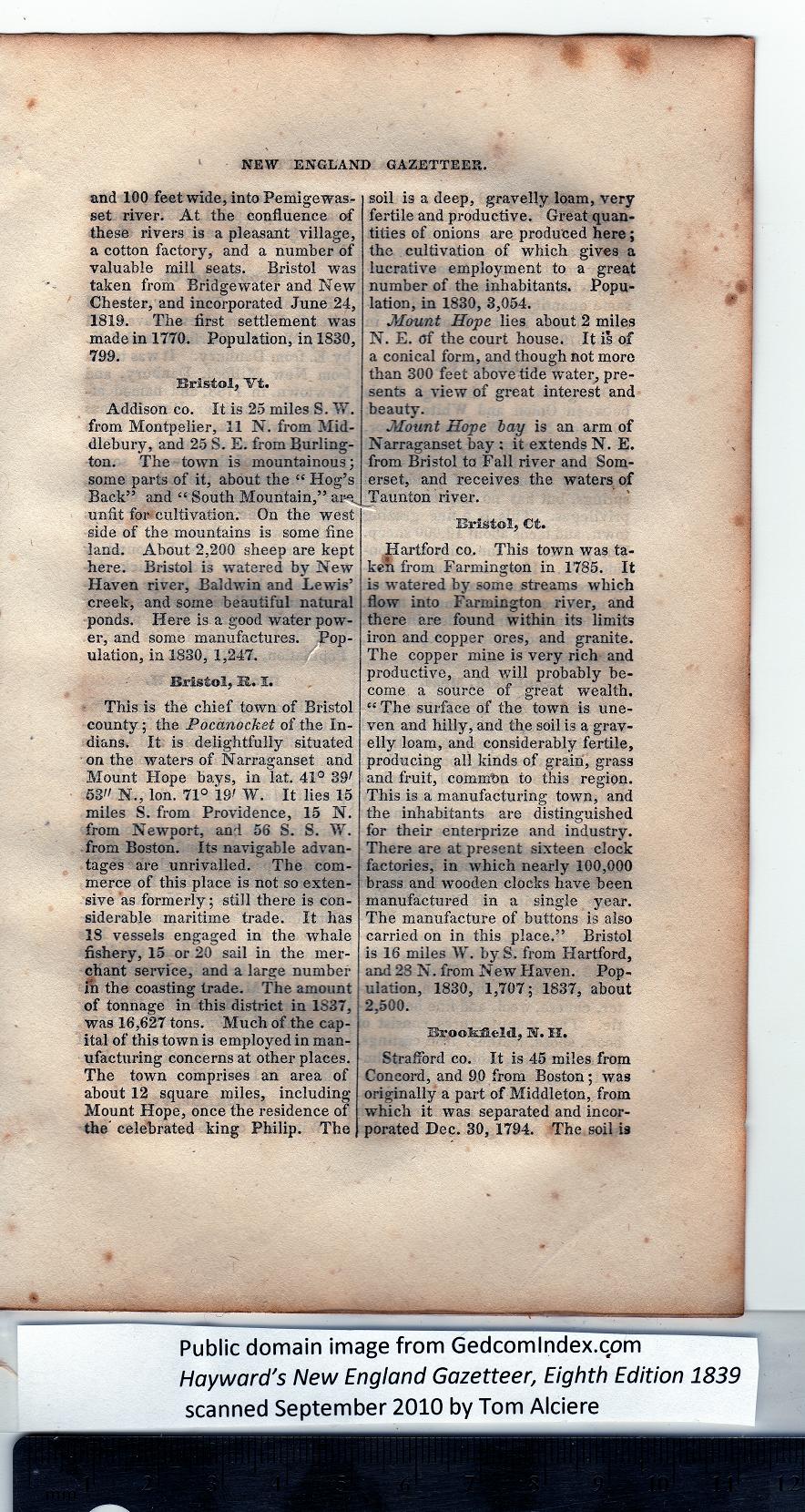|
and 100 feet wide, into Pemigewas-
set river. At the confluence of
these rivers is a pleasant village,
a cotton factory, and a number of
valuable mill seats. Bristol was
taken from Bridgewater and New
Chester, and incorporated June 24,
1819. The first settlement was
made in 1770. Population, in 1830,
799.
Bristol, Vt.
Addison co. It is 25 miles S. W.
from Montpelier, 11 N. from Mid-
dlebury, and 25 S. E. from Burling-
ton. The town is mountainous;
some parts of it, about the “ Hog’s
Back” and “ South Mountain,” ai*u
unfit for cultivation. On the west
side of the mountains is some fine
land. About 2,200 sheep are kept
here. Bristol is watered by New
Haven river, Baldwin and Lewis’
creek, and some beautiful natural
ponds. Here is a good water pow-
er, and some manufactures. Pop-
ulation, in 1830, 1,247.
Bristol, R. I.
This is the chief town of Bristol
county; the Pocanocket of the In-
dians. It is delightfully situated
on the waters of Narraganset and
Mount Hope bays, in lat. 41° 39'
53" N., Ion. 71° 19' W. It lies 15
miles S. from Providence, 15 N.
from Newport, and 56 S. S. W.
from Boston. Its navigable advan-
tages are unrivalled. The com-
merce of this place is not so exten-
sive as formerly; still there is con-
siderable maritime trade. It has
18 vessels engaged in the whale
fishery, 15 or 20 sail in the mer-
chant service, and a large number
in the coasting trade. The amount
of tonnage in this district in 1S37,
was 16,627 tons. Much of the cap-
ital of this town is employed in man-
ufacturing concerns at other places.
The town comprises an area of
about 12 square miles, including
Mount Hope, once the residence of
the' celebrated king Philip. The
soil is a deep, gravelly loam, very
fertile and productive. Great quan-
tities of onions are produced here;
the cultivation of which gives a
lucrative employment to a great
number of the inhabitants. Popu-
lation, in 1830, 3,054.
■ .......— — -T-nr...... , " ----
|
.Mount Hope lies about 2 miles
N. E. of the court house. It is of
a conical form, and though not more
than 300 feet above tide wmter, pre-
sents a view of great interest and
beauty.
Mount Hope bay is an arm of
Narraganset bay : it extends N. E.
from Bristol to Fall river and Som-
erset, and receives the waters of
Taunton river.
Bristol, Ct.
partford co. This town was ta-
ken from Farmington in 1785. It
is watered by some streams which
flow into Farmington river, and
there are found within its limits
iron and copper ores, and granite.
The copper mine is very rich and
productive, and will probably be-
come a source of great wealth.
“ The surface of the town is une-
ven and hilly, and the soil is a grav-
elly loam, and considerably fertile,
producing all kinds of grain, grass
and fruit, commtm to this region.
This is a manufacturing town, and
the inhabitants are distinguished
for their enterprize and industry.
There are at present sixteen clock
factories, in which nearly 100,000
brass and wooden clocks have been
manufactured in a single year.
The manufacture of buttons is also
carried on in this place.” Bristol
is 16 miles W. by S. from Hartford,
and 28 N. from New Haven. Pop-
ulation, 1830, 1,707; 1837, about
2,500.
ErooMcld, X. II.
Strafford co. It is 45 miles from
Concord, and 90 from Boston; was
originally a part of Middleton, from
which it was separated and incor-
porated Dec. 30, 1794. The soil is |
